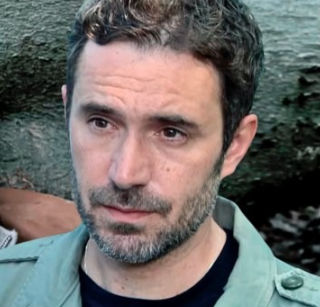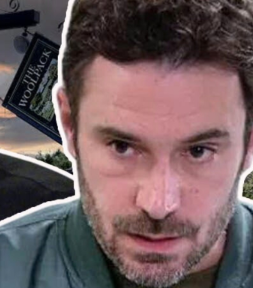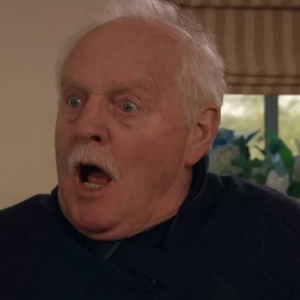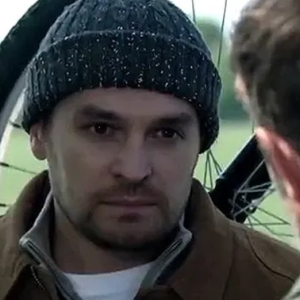The tranquil facade of Emmerdale is once again shattered as a new character, Ben, makes a dramatic return, plunging Nate Robinson’s loved ones back into a maelstrom of grief, suspicion, and a desperate search for truth. Ben, initially known as the removal man who collected Nate’s belongings before his shocking death was confirmed, now holds a pivotal, and potentially devastating, piece of the puzzle surrounding the beloved character’s demise.
When Nate Robinson first vanished from the village, the prevailing belief was that he had simply moved away, cutting ties with his family. Ben was the one tasked with retrieving Nate’s possessions from his estranged wife, Tracy Robinson, solidifying the narrative of a quiet, if heartbreaking, departure. However, the subsequent, grim discovery that Nate had been murdered fundamentally altered this perception. The police quickly deduced that Nate could not have orchestrated the removal of his own belongings if he was already deceased, leading them to suspect that the individual who arranged for the collection was, in all likelihood, his killer.
This revelation comes in the wake of a chilling development: Nate’s true murderer, John Sugden, successfully framed a vulnerable patient named Owen for the crime. John’s manipulative plot involved leaving Owen to die from an apparent overdose, meticulously staging the scene to implicate Owen as Nate’s killer. The sheer audacity and cold calculation of John’s actions left the villagers reeling, desperately hoping for closure, even if it meant confirming Owen’s guilt. Now, with Ben’s unexpected reappearance in Emmerdale, a fresh wave of anticipation and apprehension washes over Tracy and Nate’s grieving family. They are eager to hear his account, hoping it will finally confirm Owen’s culpability and bring a semblance of resolution.

The stage is set for a dramatic confrontation when detective overseeing Nate’s case approaches Ben, who is spotted in the village shop with Tracy, Nate’s father Cain Dingle, and Mackenzie Boyd. The detective immediately challenges Ben, questioning his whereabouts and demanding to know why he had not come forward sooner with any information. Ben, seemingly unfazed, claims he has been away and entirely unaware of Nate’s murder, a convenient excuse that immediately raises a red flag for observant onlookers.
The true turning point arrives when Tracy, hoping to prompt Ben’s memory, presents him with a photograph of Nate. Ben’s response is immediate and, on the surface, appears to be a crucial breakthrough. He confidently confirms that the person in the photograph was not the individual who booked his removal services, nor the one he met with to hand over the items. This admission solidifies the police’s belief that Ben’s testimony could expose the real killer. Seizing the moment, the detective then opens a file and shows Ben a picture of Owen. Without hesitation, Ben identifies Owen as the man he met with, asserting that Owen was the one who posed as Nate to arrange the collection of Nate’s belongings.
This shocking identification sends ripples through the group. For the police, it seemingly confirms their suspicions: Owen, the man John Sugden so meticulously framed, not only arranged for Nate’s possessions to be removed but, by extension, is strongly implicated as his murderer. Tracy and the others present are left stunned, caught between the hope for justice and a gnawing sense of unease.

However, for anyone familiar with the intricate and tragic narrative of Nate Robinson’s murder, Ben’s testimony immediately raises profound doubts. It simply does not align with the established facts. The audience knows, unequivocally, that Owen did not kill Nate. Flashbacks have vividly depicted John Sugden as the true culprit, showing him not only committing the heinous act but also burning Nate’s belongings to destroy any incriminating evidence. Furthermore, Owen was not even present in the village at the time of Nate’s death; he only arrived months later, long after Ben had completed his removal service and long after Nate’s body was discovered. Given this undeniable timeline, Ben could not possibly have met Owen to collect Nate’s items. Therefore, his identification of Owen to the police is demonstrably false.
This glaring inconsistency begs the critical question: Why is Ben lying to the police? The implications of his deception are vast and could further complicate an already convoluted investigation. Several compelling motivations could drive Ben’s falsehood:
One strong possibility is that Ben is acting under duress or has been coerced. John Sugden, a man capable of meticulously framing an innocent individual and orchestrating their death, would certainly possess the ruthlessness and cunning to manipulate or threaten Ben. John might have discovered some leverage over Ben – a secret, a debt, or a loved one he could harm – compelling him to provide false testimony. If Ben was indeed paid off or blackmailed, his seemingly calm demeanor during the interrogation could be a facade, masking his fear or complicity. Such an arrangement would allow John to further secure his alibi, cementing the false narrative that Owen was the killer and allowing him to evade justice for even longer.

Another unsettling theory is that Ben is not just a victim of coercion, but an active participant, however small, in John’s scheme. Perhaps he was paid a significant sum to provide this false identification, or perhaps he was a minor accomplice who witnessed something incriminating and is now protecting himself by misleading the authorities. His sudden reappearance and convenient ignorance of Nate’s murder suggest a carefully constructed alibi, designed to integrate him seamlessly into the investigation as a credible witness, when in reality, he is anything but.
Less likely, but still a consideration, is the possibility of genuine mistaken identity or a severe memory lapse. However, given the specificity of his claim – identifying Owen from a photograph as the person who booked the service – this explanation feels thin. Ben’s unwavering certainty suggests a deliberate fabrication rather than an honest error.
The repercussions of Ben’s false testimony are dire, extending far beyond the immediate police investigation. For the deceased Owen, it further tarnishes his name, cementing a wrongful accusation in the minds of the villagers and the authorities. For John Sugden, it provides a crucial layer of protection, strengthening the false narrative and allowing him to continue living freely, seemingly above suspicion. This prolonged deception means that Nate’s family, particularly Tracy and Cain, will be left in a cruel limbo, clinging to a false sense of closure while the true killer remains at large. Their grief will be compounded by this renewed, yet ultimately fruitless, pursuit of justice.

Cain Dingle, known for his sharp instincts and fierce loyalty, may well be the first to sense that something is amiss. He has a deep understanding of the village’s undercurrents and a history of seeing through deception. If he starts to suspect Ben is lying, it could ignite a new chapter of investigation for Nate’s family, forcing them to look beyond the seemingly conclusive evidence. The unfolding drama promises to be a tense unraveling of secrets, as the web of deceit woven around Nate’s murder begins to fray. The question is not if Ben’s lie will be exposed, but when, and what further devastation it will unleash when the true depth of John Sugden’s depravity is fully revealed. The dark secrets of Emmerdale run deep, and Ben’s shocking revelation is merely another twisted thread in a meticulously crafted tapestry of murder and manipulation.





